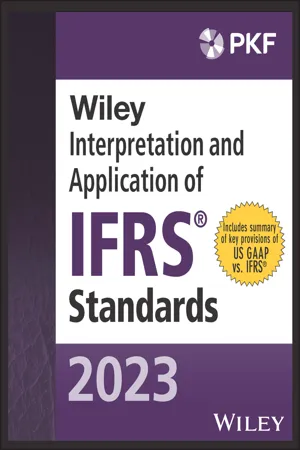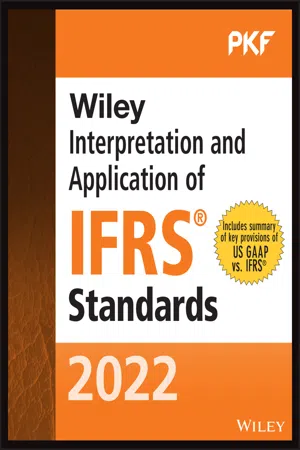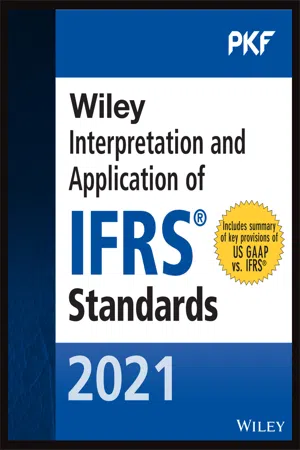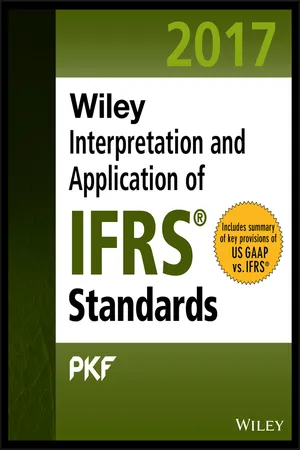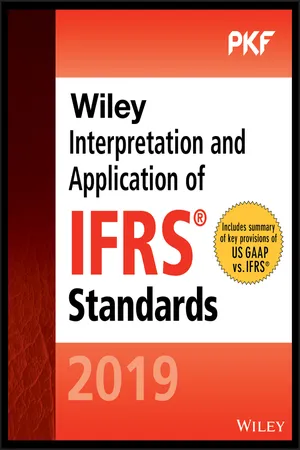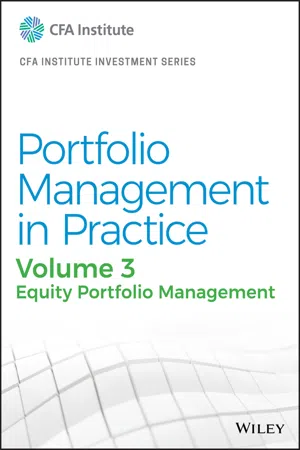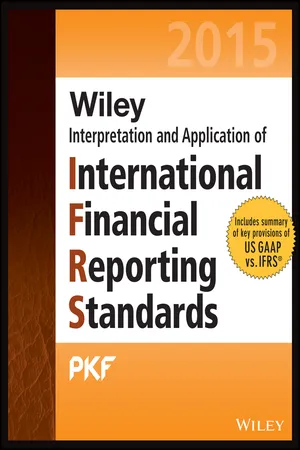Business
Equity
Equity refers to the ownership interest of shareholders in a company. It represents the residual value of assets after deducting liabilities. Equity can be in the form of common stock, preferred stock, or retained earnings.
Written by Perlego with AI-assistance
Related key terms
11 Key excerpts on "Equity"
- Francesco Bellandi(Author)
- 2012(Publication Date)
- Wiley(Publisher)
Accounting literature identifies some main characteristics of Equity. It employs those features in order to arrive at both a definition of Equity as well as a distinction between Equity and financial liabilities.The previous paragraphs analyzed the terminology and definitions of terms relating to Equity. Although the Equity/liability distinction falls outside the scope of this Book, as well as its determination from a legal or tax viewpoint,145 the following paragraphs elaborate on points already discussed and on the main characteristics of Equity as a base for a definition of Equity itself, according to the following:- Ownership rights;
- Dependency on an entity's dynamics;
- Risks and rewards of ownership;
- Subordination; and
- Discretion of distributions to owners.
Shareholders’ interest conveys certain ownership rights, e.g., voting, participation, and other rights. Section 2.1.4 previously discusses the relationships between ownership interest, voting interests, and owners’ rights.Also, the Equity of business enterprises is the source of distributions to owners. Section 2.1.4.2 previously analyzes such an assertion, its implications, and its relation to the notion of ownership interest.Comment: The basic ownership approach proposed by the FASB as part of the Financial Instruments with Characteristics of Equity Project focuses on the concept of residual interest in order to classify the most residual claim as Equity. A claim that reduces the residual net assets available for distribution to the holders of basic ownership instruments would be classified as liability.146- (Author)
- 2023(Publication Date)
- Wiley(Publisher)
16 SHAREHOLDERS' Equity- Introduction
- Definitions of Terms
- Recognition and Measurement
- Presentation and Disclosure
- Types of Shares
- Presentation and Disclosures Relating to Share Capital
- Presentation and Disclosures Relating to Other Equity
- Classification Between Liabilities and Equity
- Puttable Instruments
- Compound Financial Instruments
- Share Issuances and Related Matters
- Additional Guidance Relative to Share Issuances and Related Matters
- Accounting for the issuance of shares
- Issuance of share units
- Share subscriptions
- Distinguishing additional contributed capital from the par or stated value of the shares
- Donated capital
- Compound and Convertible Equity Instruments
- Retained Earnings
- Dividends and Distributions
- Cash dividends
- Liquidating dividends
- Taxation impact
- Accounting for Treasury Share Transactions
- Members' Shares in Co-operative Entities
- Additional Guidance Relative to Share Issuances and Related Matters
- Examples of Financial Statement Disclosures
- Future Developments
- US GAAP Comparison
INTRODUCTION
The Conceptual Framework defines Equity as the residual interest in the assets of an entity after deducting all its liabilities. This definition applies to all reporting entities. For many preparers of financial statements, Equity is likely to comprise amounts that are attributable to issued share capital and total retained earnings, often described as an entity's reserves.To the holders of Equity, Equity represents an interest in the net assets (i.e., assets less liabilities) of the entity. It is not a claim on those assets in the sense that liabilities are, since Equity claims against the entity do not include claims that meet the IFRS definition of a liability. Equity claims may be established by contract legislation or similar means. Equity claims may include claims based on the rights of shares issued by the entity and other obligations of the entity to issue another Equity claim.- eBook - ePub
The Controller's Function
The Work of the Managerial Accountant
- Steven M. Bragg(Author)
- 2011(Publication Date)
- Wiley(Publisher)
Chapter 16 EquityShareholders’ Equity is the interest of the shareholders, or owners, in the assets of a company, and at any time is the cumulative net result of past transactions affecting this segment of the balance sheet. This Equity is created initially by the owners’ investment in the company, and may be increased from time to time by additional investments, as well as by net earnings. It can be reduced by distributions of the Equity to the owners (usually as dividends). Further, it may also decrease if the enterprise is unprofitable. When all liabilities are satisfied, the remainder belongs to the owners.Basic accounting concepts govern the accounting for shareholders’ Equity as a whole, for each class of shareholder, and for the various segments of the Equity interest, such as capital stock, contributed capital, and earned capital. This chapter addresses such topics as the cost of capital, dividend policy, Equity planning, and stock records.Role of the ControllerThe controller must properly account for the shareholders’ Equity, providing those analyses and recommending those actions that are consistent with enhancing shareholder value over the long term. Specifically, these tasks must be performed:- Accounting for shareholders’ Equity in accordance with generally accepted accounting principles (GAAP). This includes the historical analysis of the source of the Equity and the segregation of the cumulative Equity by class of shareholder
- Preparing the appropriate reports on the status and changes in shareholders’ Equity as required by agencies of the U.S. government, management, credit agreements, and other contracts
- Making the necessary analyses to assist in planning the most appropriate source (e.g., debt or Equity) of new funds, and the timing and amount required of each
- Maintaining in proper and economical form the capital stock records of the individual shareholders. In a larger firm, a separate department or outside stock transfer agent might perform these functions
- (Author)
- 2022(Publication Date)
- Wiley(Publisher)
16 SHAREHOLDERS' Equity- Introduction
- Definitions of Terms
- Recognition and Measurement
- Presentation and Disclosure
- Types of Shares
- Presentation and Disclosures Relating to Share Capital
- Presentation and Disclosures Relating to Other Equity
- Classification Between Liabilities and Equity
- Puttable Instruments
- Compound Financial Instruments
- Share Issuances and Related Matters
- Additional Guidance Relative to Share Issuances and Related Matters
- Accounting for the issuance of shares
- Issuance of share units
- Share subscriptions
- Distinguishing additional contributed capital from the par or stated value of the shares
- Donated capital
- Compound and Convertible Equity Instruments
- Retained Earnings
- Dividends and Distributions
- Cash dividends
- Liquidating dividends
- Taxation impact
- Accounting for Treasury Share Transactions
- Members’ Shares in Co-operative Entities
- Additional Guidance Relative to Share Issuances and Related Matters
- Future Developments
- Examples of Financial Statement Disclosures
- US GAAP Comparison
INTRODUCTION
The Conceptual Framework defines Equity as the residual interest in the assets of an entity after deducting all its liabilities. This definition applies to all reporting entities. For many preparers of financial statements, Equity is likely to comprise amounts that are attributable to issued share capital and total retained earnings, often described as an entity's reserves.To the holders of Equity, Equity represents an interest in the net assets (i.e., assets less liabilities) of the entity. It is not a claim on those assets in the sense that liabilities are, since Equity claims against the entity do not include claims that meet the IFRS definition of a liability. Equity claims may be established by contract legislation or similar means. Equity claims may include claims based on the rights of shares issued by the entity and other obligations of the entity to issue another Equity claim.- eBook - ePub
- Bruce Mackenzie, Danie Coetsee, Tapiwa Njikizana, Raymond Chamboko(Authors)
- 2011(Publication Date)
- Wiley(Publisher)
19SHAREHOLDERS’ EquityPERSPECTIVE AND ISSUES
The IASB’s Framework defines Equity as the residual interest in the assets of an entity after deducting all its liabilities. Shareholders’ Equity is comprised of all capital contributed to the entity (including share premium, also referred to as capital paid-in in excess of par value) plus retained earnings (which represents the entity’s cumulative earnings, less all distributions that have been made therefrom).IAS 1, which was substantially revised in late 2007, suggests that shareholders’ interests be subcategorized into three broad subdivisions: issued share capital, retained earnings (accumulated profits or losses) and other components of Equity (reserves). Depending on jurisdiction, issued share capital may need to be further categorized as par or stated capital and as additional contributed capital. This standard also sets forth requirements for disclosures about the details of share capital for corporations and the various capital accounts of other types of entities, such as partnerships.Equity represents an interest in the net assets (i.e., assets less liabilities) of the entity. It is, however, not a claim on those assets in the sense that liabilities are. Upon the liquidation of the business, an obligation arises for the entity to distribute any remaining assets to the shareholders, but only after the creditors are first fully paid.Earnings are not generated by transactions in an entity’s own Equity (e.g., by the issuance, reacquisition, or reissuance of its common or preferred shares). Depending on the laws of the jurisdiction of incorporation, distributions to shareholders may be subject to various limitations, such as to the amount of retained (accounting basis) earnings. In other cases, limitations may be based on values not presented in the financial statements, such as the net solvency of the entity as determined on a market value basis; in such instances, IFRS-basis financial statements will not provide information needed for making such determination. - eBook - ePub
Technology Entrepreneurship
Creating, Capturing, and Protecting Value
- Thomas N. Duening, Robert A. Hisrich, Michael A. Lechter(Authors)
- 2009(Publication Date)
- Academic Press(Publisher)
Equity is simply another term for an ownership interest in a business. Equity financing should be distinguished from debt financing. Debt financing, taking out a loan or selling bonds to raise capital, involves paying interest to a lender for the use of the lender's money. The cost of debt financing is typically finite, and the lenders will not share in any appreciation in the value of the business. However, in the short term, repayment of the loan can place constraints on the start-up venture's cash flow; both principal and interest must be repaid, and repayment is required whether the company is successful or not. The requirement to make periodic payments to service debt can make it difficult for the start-up venture to manage its cash flow.Equity financing entails selling part of the ownership of the company. Equity financing is more flexible than debt financing with respect to cash flow concerns. There are typically no short-term repayment requirements, and Equity investors share the risk. However, Equity investors also share in any appreciation in the value of the business. And, while profit interests can be separated from governance and control, any time Equity investors are added, there is some loss of independence on the part of the preinvestment ownership team.4.4.1. Equity and Stocks
The particular terminology used to denominate Equity varies depending upon the particular legal structure of the entity. As noted earlier, Equity interests in partnerships and LLCs are typically referred to in terms of ownership percentages or units corresponding to a percentage of ownership. When a corporation is created, its articles of incorporation authorize it to issue up to a designated total number of authorized shares of stock. The original number of authorized shares is largely arbitrary, but it should be selected carefully on the basis of the venture's financial plan and future fund-raising objectives. The number of authorized shares can be changed, but only through a vote by the venture's shareholders. From the authorized pool of shares, the venture then can issue shares to founders and investors. It is the issued shares that constitute the ownership structure of the venture. That is, a shareholder's percentage of ownership of the venture is calculated as the proportion of shares held compared to shares that have been issued. Most ventures will reserve a portion of the authorized shares in the company's treasury for later use. The shares held in reserve are called “unissued shares.”It is also important to note that not all stock is created equal. A venture's articles of incorporation can be crafted to permit it to issue different classes of shares, each having a specific designation and unique preferences, limitations, and/or rights. These share classes are usually associated with financing rounds, and are often designated as Class A, Class B, and so on, or as Series A, Series B, and so on. The articles of incorporation either specify the particulars of each class of shares or delegate the authority to the board of directors. In general, the preferences and relative rights of classes of shares relate to voting, payment of dividends, and distribution of corporate assets on dissolution. Limitations of a class of shares typically relate to restrictions on transferability. Shareholders of private ventures normally do not want to leave it up to shareholders to decide to whom they may transfer their shares. Transferability is usually governed by buy-sell - (Author)
- 2021(Publication Date)
- Wiley(Publisher)
IAS 1 suggests that shareholders' interests be categorised into three broad subdivisions: issued share capital, retained earnings (accumulated profits or losses) and other components of Equity (reserves). Depending on jurisdiction, issued share capital may need to be further categorised as par or stated capital and as additional contributed capital/share premium. This standard also sets forth requirements for disclosures about the details of share capital for corporations and the various capital accounts of other types of entities, such as partnerships.Equity represents an interest in the net assets (i.e., assets less liabilities) of the entity. It is, however, not a claim on those assets in the sense that liabilities are. Upon the liquidation of the business, an obligation arises for the entity to distribute any remaining assets to the shareholders, but only after all liabilities are first settled.Earnings are not generated by transactions in an entity's own Equity (for example, by the issuance, reacquisition or reissuance of its common or preferred shares). Depending on the laws of the jurisdiction of incorporation, distributions to shareholders may be subject to various limitations, such as to the amount of retained (accounting basis) earnings. In other cases, limitations may be based on values not presented in the financial statements, such as the future liquidity and net solvency of the entity as determined on a market value basis; in such instances, IFRS‐based financial statements will not provide information needed for making such determination.A major objective of the accounting for shareholders' Equity is the adequate disclosure of the sources from which the capital was derived. For this reason, a number of different contributed capital accounts may be presented in the statement of financial position. The rights of each class of shareholder must also be disclosed. Where shares are reserved for future issuance, such as under the terms of share option plans, this fact must also be made known. Share option plans will be addressed within Chapter 17- eBook - ePub
Wiley IFRS 2017
Interpretation and Application of IFRS Standards
- (Author)
- 2017(Publication Date)
- Wiley(Publisher)
IAS 1 suggests that shareholders' interests be subcategorised into three broad subdivisions: issued share capital, retained earnings (accumulated profits or losses) and other components of Equity (reserves). Depending on jurisdiction, issued share capital may need to be further categorised as par or stated capital and as additional contributed capital/share premium. This standard also sets forth requirements for disclosures about the details of share capital for corporations and the various capital accounts of other types of entities, such as partnerships.Equity represents an interest in the net assets (i.e., assets less liabilities) of the entity. It is, however, not a claim on those assets in the sense that liabilities are. Upon the liquidation of the business, an obligation arises for the entity to distribute any remaining assets to the shareholders, but only after any liability is first settled.Earnings are not generated by transactions in an entity's own Equity (for example, by the issuance, reacquisition or reissuance of its common or preferred shares). Depending on the laws of the jurisdiction of incorporation, distributions to shareholders may be subject to various limitations, such as to the amount of retained (accounting basis) earnings. In other cases, limitations may be based on values not presented in the financial statements, such as the future liquidity and the net solvency of the entity as determined on a market value basis; in such instances, IFRS-based financial statements will not provide information needed for making such determination.A major objective of the accounting for shareholders' Equity is the adequate disclosure of the sources from which the capital was derived. For this reason, a number of different contributed capital accounts may be presented in the statement of financial position. The rights of each class of shareholder must also be disclosed. Where shares are reserved for future issuance, such as under the terms of share option plans, this fact must also be made known. Share option plans will be addressed within Chapter 17 - (Author)
- 2019(Publication Date)
- Wiley(Publisher)
IAS 1 suggests that shareholders’ interests be categorised into three broad subdivisions: issued share capital, retained earnings (accumulated profits or losses) and other components of Equity (reserves). Depending on jurisdiction, issued share capital may need to be further categorised as par or stated capital and as additional contributed capital/share premium. This standard also sets forth requirements for disclosures about the details of share capital for corporations and the various capital accounts of other types of entities, such as partnerships.Equity represents an interest in the net assets (i.e., assets less liabilities) of the entity. It is, however, not a claim on those assets in the sense that liabilities are. Upon the liquidation of the business, an obligation arises for the entity to distribute any remaining assets to the shareholders, but only after all liabilities are first settled.Earnings are not generated by transactions in an entity’s own Equity (for example, by the issuance, reacquisition or reissuance of its common or preferred shares). Depending on the laws of the jurisdiction of incorporation, distributions to shareholders may be subject to various limitations, such as to the amount of retained (accounting basis) earnings. In other cases, limitations may be based on values not presented in the financial statements, such as the future liquidity and the net solvency of the entity as determined on a market value basis; in such instances, IFRS-based financial statements will not provide information needed for making such determination.A major objective of the accounting for shareholders’ Equity is the adequate disclosure of the sources from which the capital was derived. For this reason, a number of different contributed capital accounts may be presented in the statement of financial position. The rights of each class of shareholder must also be disclosed. Where shares are reserved for future issuance, such as under the terms of share option plans, this fact must also be made known. Share option plans will be addressed within Chapter 17- eBook - ePub
Portfolio Management in Practice, Volume 3
Equity Portfolio Management
- (Author)
- 2020(Publication Date)
- Wiley(Publisher)
When the company issues Equity securities, it is not contractually obligated to repay the amount it receives from shareholders, nor is it contractually obligated to make periodic payments to shareholders for the use of their funds. Instead, shareholders have a claim on the company’s assets after all liabilities have been paid. Because of this residual claim, Equity shareholders are considered to be owners of the company. Investors who purchase Equity securities are seeking total return (i.e., capital or price appreciation and dividend income), whereas investors who purchase debt securities (and hold until maturity) are seeking interest income. As a result, Equity investors expect the company’s management to act in their best interest by making operating decisions that will maximize the market price of their shares (i.e., shareholder wealth).In addition to common shares (also known as ordinary shares or common stock), companies may also issue preference shares (also known as preferred stock), the other type of Equity security. The following sections discuss the different types and characteristics of common and preference securities.3.1. Common Shares
Common sharesrepresent an ownership interest in a company and are the predominant type of Equity security. As a result, investors share in the operating performance of the company, participate in the governance process through voting rights, and have a claim on the company’s net assets in the case of liquidation. Companies may choose to pay out some, or all, of their net income in the form of cash dividends to common shareholders, but they are not contractually obligated to do so.6Voting rights provide shareholders with the opportunity to participate in major corporate governance decisions, including the election of its board of directors, the decision to merge with or take over another company, and the selection of outside auditors. Shareholder voting generally takes place during a company’s annual meeting. As a result of geographic limitations and the large number of shareholders, it is often not feasible for shareholders to attend the annual meeting in person. For this reason, shareholders mayvote by proxy - eBook - ePub
Wiley IFRS 2015
Interpretation and Application of International Financial Reporting Standards
- (Author)
- 2015(Publication Date)
- Wiley(Publisher)
IAS 1 suggests that shareholders’ interests be subcategorized into three broad subdivisions: issued share capital, retained earnings (accumulated profits or losses) and other components of Equity (reserves). Depending on jurisdiction, issued share capital may need to be further categorized as par or stated capital and as additional contributed capital/share premium. This standard also sets forth requirements for disclosures about the details of share capital for corporations and the various capital accounts of other types of entities, such as partnerships.Equity represents an interest in the net assets (i.e., assets less liabilities) of the entity. It is, however, not a claim on those assets in the sense that liabilities are. Upon the liquidation of the business, an obligation arises for the entity to distribute any remaining assets to the shareholders, but only after any liability is first settled.Earnings are not generated by transactions in an entity’s own Equity (e.g., by the issuance, reacquisition, or reissuance of its common or preferred shares). Depending on the laws of the jurisdiction of incorporation, distributions to shareholders may be subject to various limitations, such as to the amount of retained (accounting basis) earnings. In other cases, limitations may be based on values not presented in the financial statements, such as the future liquidity and the net solvency of the entity as determined on a market value basis; in such instances, IFRS-basis financial statements will not provide information needed for making such determination.A major objective of the accounting for shareholders’ Equity is the adequate disclosure of the sources from which the capital was derived. For this reason, a number of different contributed capital accounts may be presented in the statement of financial position. The rights of each class of shareholder must also be disclosed. Where shares are reserved for future issuance, such as under the terms of share option plans, this fact must also be made known. Share option plans will be addressed in Chapter 17.
Index pages curate the most relevant extracts from our library of academic textbooks. They’ve been created using an in-house natural language model (NLM), each adding context and meaning to key research topics.

